Here is my final exam:
Geography 291: Geospatial Analysis with Desktop GIS
Module 1: 1/14/2026 to 3/3/2026, OWU Environment & Sustainability
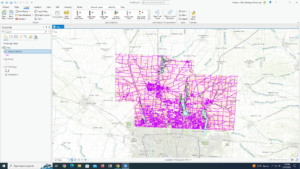
Getting To Know ArcGIS by Michael Law and Amy Collins, Chapter 6: Collaborative mapping
Notes and Comments
Exercise Notes and Screenshots
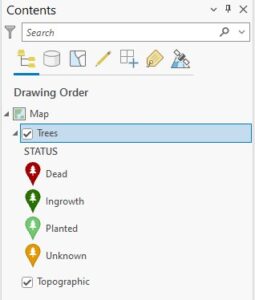
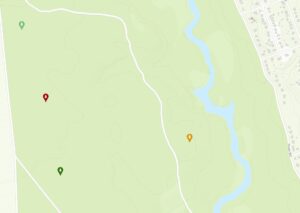
Getting To Know ArcGIS by Michael Law and Amy Collins, Chapter 7: Geoenabling your project
Notes and Comments
Exercise Notes and Screenshots
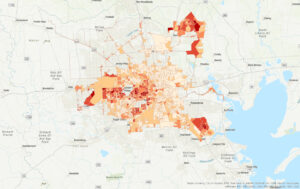
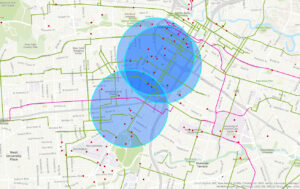
Getting To Know ArcGIS by Michael Law and Amy Collins, Chapter 8: Analyzing spatial and temporal patterns
Notes and Comments
Exercise Notes and Screenshots
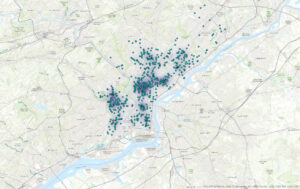
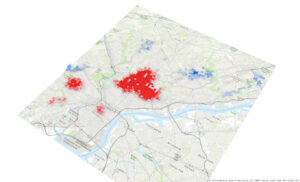
Getting To Know ArcGIS by Michael Law and Amy Collins, Chapter 9: Defining suitability
Notes and Comments
Exercise Notes and Screenshots
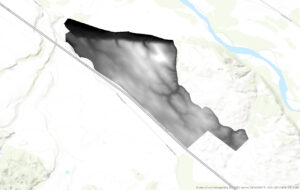
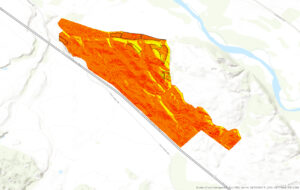
Getting To Know ArcGIS by Michael Law and Amy Collins, Chapter 10: Presenting your project
Notes and Comments
Exercise Notes and Screenshots
Getting To Know ArcGIS by Michael Law and Amy Collins
Chapter 1: Introducing GIS
Notes and Comments
Exercise Notes and Screenshots
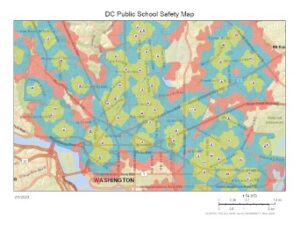
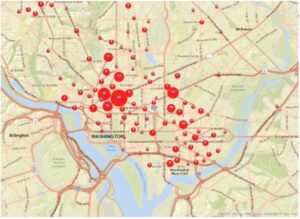
Getting To Know ArcGIS by Michael Law and Amy Collins
Chapter 2: A first look at ArcGIS Pro
Notes and Comments
Exercise Notes and Screenshots
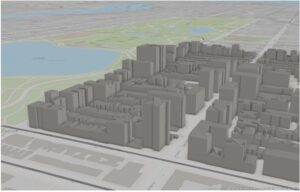
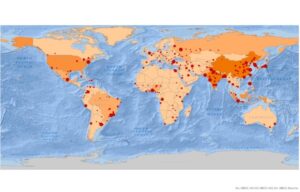
Getting To Know ArcGIS by Michael Law and Amy Collins
Chapter 3: Exploring geospatial relationships
Notes and Comments
Exercise Notes and Screenshots
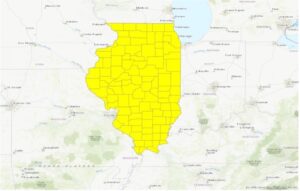
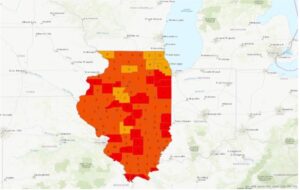
Getting To Know ArcGIS by Michael Law and Amy Collins
Chapter 4: Creating and editing spatial data
Notes and Comments
Exercise Notes and Screenshots
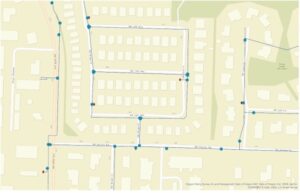
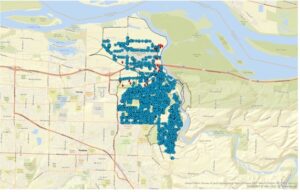
Getting To Know ArcGIS by Michael Law and Amy Collins
Chapter 5: Facilitating workflows
Notes and Comments
Exercise Notes and Screenshots
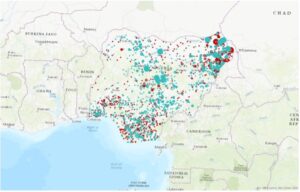
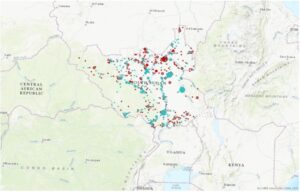
Chapter 5
This chapter explains how and why GIS users analyze data inside an area, and specifies the advantages and disadvantages to using various mapping methods. First, Mitchell examines why people map different areas. He states that people map “to monitor what’s occurring inside it, or to compare several areas based on what’s inside each.” For example, a police officer would be interested in analyzing how many people on parole are still in their specified areas; if a person is outside of their specified region, then a warrant may be issued. Next, the author emphasizes the importance of determining what information is necessary when attempting to map out a problem. The following questions are ones he deems critical: are you mapping a single or multiple areas?; are the features continuous or discrete?; do you need a list, count, or summary?; and do you need to see the features completely or partially inside the area? Then, Mitchell analyzes three different mapping methods: (1) drawing areas and features, (2) selecting features inside an area, and (3) overlaying areas and features. He provides short synopses for what each method is good for, what you need to utilize the method, and how GIS visualize these methods. Finally, the author goes into further detail about each method and provides tips and trips to better assemble and analyze maps.
Overall, I found this to chapter to be helpful in providing tips into better defining map data so as not to confuse observers, but also in creating better analyses for the user. Although I did find this reading to be very redundant with the majority of points being made multiple times throughout. I will be utilizing this chapter in particular to troubleshoot if I run into any issues analyzing data.
Chapter 6
This chapter explains the significance of mapping the distance around an area and specifies three manners in which the process can be done. First, the author states why people map near specified areas and examines various questions that he finds to be important in configuring how to better define problems. Then, he states the three types of mapping processes utilized to map nearby: (1) straight-line distance, (2) distance or cost over a network, and (3) cost over a surface. Before defining each individually, Mitchell compares each type with one another and clarifies which mapping method is best for different situations. Next, he begins to describe the straight-line distance method, which he says is when “you specify the source feature and the distance, and the GIS finds the area or the surrounding features within the distance.” For example, you might have a toxic waste spill at a nuclear plant and need to know how many houses or businesses are within a 10-mile radius of the nuclear plant to properly evacuate the region. In addition, Mitchell examines measuring distance or cost over a network. This is when “you specify the source locations and a distance or travel cost along with each linear feature, and the GIS finds which segments of the network are within the distance or cost.” Furthermore, Mitchell defines the final mapping method, calculating cost over a geographic surface. This is when “you specify the location of the source features and a travel cost, and the GIS creates a new layer showing the travel cost from each source feature.” For example, you may have a river that has been commonly used as a dumping ground for animal waste by a local farmer, and the river sits on an uneven surface over a large stretch of land. You may need to use GIS to calculate the cost distance of river runoff to help better prepare for cleanup.
Chapter 7
This chapter primarily explains the importance of mapping change and provides the necessary logistical tools to create an easily digestible map utilizing different data. First, the author examines the various types of change that can be defined through geographics. He says, you can either map the change in location, which “helps you see how features behave so you can predict where they’ll move,” or the change in character or magnitude, which “shows you how conditions in a given place have changed.” For example, one mountain may shift a few inches a year due to plate tectonics, so scientists may be interested in plotting this information in GIS. Then, Mitchell defines the various methods of mapping change including time series, tracking maps, and measuring change. He states that time series are “good for showing changes in boundaries, values for discrete areas, or surfaces.” In other words, good for locations that are constant, or never move. Tracking maps are “good for showing movement in discrete locations, linear features, or area boundaries, which is like time series, but can include features for several dates and times. Finally, he explains measuring change shows “the amount, percentage, or rate of change in a place.” For example, you may measure change within a small village following a mudslide or a tornado to understand the full impacts of the natural disaster event.
Chapter 1
This chapter introduced readers to GIS analysis, the manners in which it can be applied, and the technical terms used to describe its functions. First, the author provided a clear definition of GIS analysis, and then described the five ways in which geographic data should be analyzed: (1) frame the question, (2) understand your data, (3) choose a method, (4) process the data, and (5) look at the results. Next, Mitchell distinguishes the various feature types, which includes discrete, continuous, and summarized features. These are important because they determine how to move forward with the given data (e.g., if we know our boundaries are discrete, then we know exactly where to pull our data points). Then, the author describes how each geographic feature can be modeled—through either vector or raster models. In addition, Mitchell defines map projections and coordinate systems, and explains how the shape of our globe impacts their applications. Finally, this chapter describes different attributes that characterizes data (e.g., categories, ranks, ratios, etc.).
Overall, I think this chapter was critical in understanding some of the jargon that has been used in the past here at Ohio Wesleyan that I have neglected to do more research about. Although the information in this chapter is definitely basic, I think by starting out with this advice with accompanying examples, I will find it easier to understand the ArcGIS application.
Chapter 2
This chapter explains the importance of mapping and discloses strategies that can be utilized to best represent data through map design. First, the author specifies that mapping can be used to analyze where action needs to occur in a geographic space, to explore the causation of (an) event(s), or to search an area for a specific criterion. Then, Mitchell mentions the necessary steps to prepare data for mapping. He stated that users need to ensure that geographic coordinates and category values (if needed) are assigned to each feature. If not, Mitchell indicates that there a variety of issues that could occur. Next, Mitchell articulates how GIS works in creating a map for both single and categorical features that are prescribed by the users. In addition, the author provides tips for users to make their map as clear as possible to audiences. Finally, Mitchell discusses how to analyze geographic maps to look for patterns. He clarifies that pattern formation is one of the critical pieces of creating a map, so it is important that these steps are followed successfully.
As suspected, this chapter added to what we just learned from the first chapter. For example, Mitchell consistently reverberates terms such as “continuous” and “raster,” which were just defined in the first chapter. Additionally, this section gave great guidance to avoid mistakes when creating maps. For example, he said “if you’re showing several categories on a single map, you’ll want to display no more than seven categories,” and also, “if the pattern are complex or the features are close together, creating a separate map for each category can make patterns within a particular category—and even across categories—easier to see.” Not only will these tips allow me to avoid making unnecessary mistakes, but also it creates a better understanding of why there are specific tasks that users need to make.
Chapter 3
This chapter focused on mapping intervals of values and explained which methods of mapping are necessary based on the type of feature. First, the author examined the importance of graphing maps with varying quantities and reverberated some of the information that was discussed in chapters 1 and 2 (specifically, discrete, continuous, and summarized features). Next, Mitchell defined the various quantities like counts and amounts, ratios and ranks. Then, he begins to explain how these quantities can be divided into classes either manually or through the use of classification schemes. The four classification schemes he describes are natural breaks (jenks), quantile, equal interval, and standard deviation. Each of these class separation tools allow for geographers to better understand given data sets, but they must be used in the right manner. For example, natural breaks are good for mapping uneven data sets, but quantiles are not (they are known for comparing areas that are roughly the same size). Furthermore, Mitchell explains how to deal with outliers in data sets and defines the differences between various map types for understanding discrete, continuous, or summarized areas. Finally, the author describes how users should be able to visualize patterns in their maps, and how to make it clearer for their audiences.
Although this reading bares some similarities between chapters 1 and 2, the author was able to provide guidance for why and how classes should be assembled for a given data set. In addition, it was able to differentiate between different map types, which is useful for when I apply this knowledge to the ArcGIS application. I am curious how the author will be able to build from this to describe map densities in the next chapter without reverberating the same information.
Chapter 4
This chapter describes the importance of density maps and explains how to create the two distinct types: (1) by defined area and (2) by density surface. First, as the previous chapters, he reverberates some of the primary information for why you should have an objective in mind when creating maps of any kinds. However, he describes that for density maps, they are “useful when mapping areas…which vary greatly in size.” Then, the author describes in greater detail the two distinct types of density maps. He says, map density by area when “you have data already summarized by area, or lines or points you can summarize by area.” On the other hand, Mitchell states to create a density surface when “you have individual locations, sample points, or lines.” Then, he goes into broader detail about each type with how each are calculated, displayed, and finally analyzed.
Honestly, I found this section to be a little redundant, but I understand its importance. Without a firm understanding of density maps, there’s a lot of data that cannot be properly analyzed. In addition, this sort of mapping is commonly what I see when I go to various databases. It is fairly easy to interpret, and from the sounds of it, pretty easy to map on your own—if you know some basic math.
Hello everyone!
My name is Graham Steed. Yes, that baby is me (I still wonder what made me so happy; maybe grass, trees, and sustainability, but most likely my mom). Anyways, as I was saying, I am a 2023 senior majoring in Environmental Studies. I am from Marion, Ohio, and I currently live in the Service Engagement and Leadership (SEAL) SLU. I am excited to take this class because I think ArcGIS is an important application that has so many real world uses, so why not learn more about it.
In regards to Nadine Schuurman’s GIS: A Short Introduction, Chapter 1, I found this reading to be both informative and interesting. Although I had previously heard of the debate between GISystems and GIScience, I now understand why making a decision is quite confusing. Personally, I find the theoretical aspects of spatial divisions found in GIScience to be the most fascinating because this is something that historically has been neglected, even in the early days of GISystems. Additionally, in my opinion, I believe GIScience attempts to clarify what the author says is “fuzzy” phenomena, which we have a hard time demarcating, if at all.
Also, Schuurman discusses the technical history of GIS. What I found to be the most intriguing portion of this section was the author’s description of Ian McHarg’s methods for analyzing a particular space. To me, it is interesting that we still utilize McHarg’s “layers” approach in a digital environment. Furthermore, I was surprised that McHarg was able to get the results he was looking for by just using paper shaped into different forms.
Finally, Schuurman explained the different uses among different organizations, such as municipalities, governments, and companies. I think it is awesome that you can map and analyze concrete data like waterways, public transportation systems, bicycle paths, public buildings, et cetera, but also abstract data like religion, income, and race. It is also extremely neat how geographers can utilize GIS data to predict future events like natural disasters.
In looking into GIS applications, I researched two topics of interest: food safety and income inequality. I found out that GIS can be used to plot human epidemiology and public health, agriculture, plant and animal health, and environmental factors that can determine overall food quality and safety in a given space, which helps companies and health professionals better protect consumers. In addition, I discovered that you can utilize GIS to plot income levels, which assists a wide range of researchers in answering questions in public health, economics, and government.
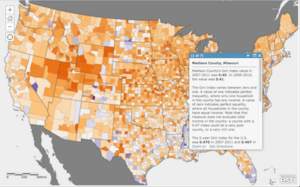
Sources:
https://hub.arcgis.com/maps/UrbanObservatory::income-inequality-in-u-s-counties/about
https://www.proquest.com/docview/2741249913?pq-origsite=summon